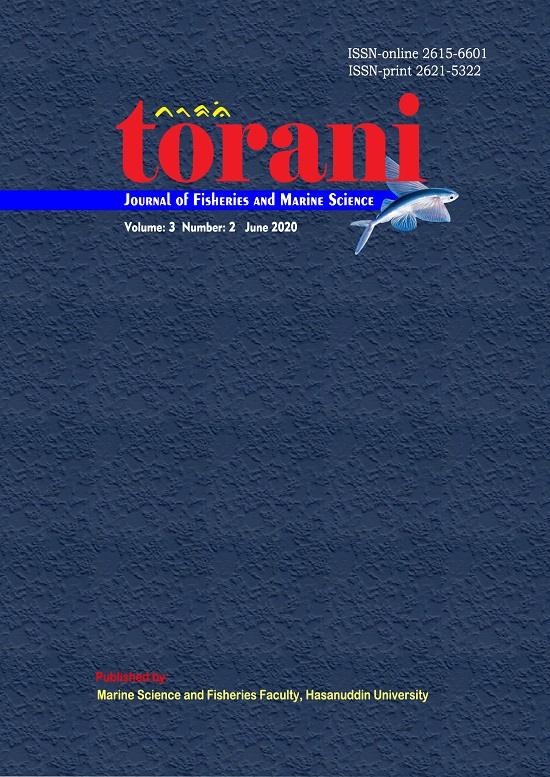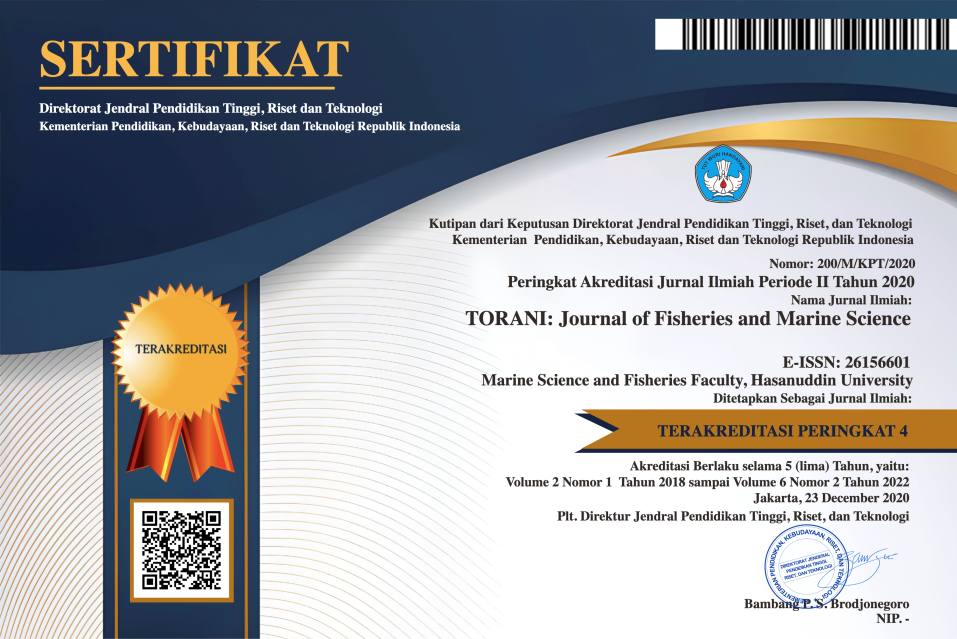Intrapopulated Genetic Variation Of The Blue Swimming Crab (Portunus Pelagicus) From Kaimana, West Papua Indonesia Based On Cytochrome C Oxidase Subunit I (Co1) Gene Sequence
DOI:
https://doi.org/10.35911/torani.v3i2.11373Keywords:
blue swimming crab, Portunus pelagicus, CO1, KaimanaAbstract
The first step to establishing appropriate broodstock management and conservation programs and to avoid decreasing genetic variability in this selective breeding program is the development of molecular genetic markers that can be used for evaluation of genetic stock determinations in gene flow rates. However, morphologically it is rather difficult to distinguish between one individual and another. The purpose of this study was to analyze genetic variation to prove differences in intrapopulated crabs. Small crab samples were collected from the district. Kaimana, West Papua. Morphological analysis was carried out by looking at differences in the color and pattern of white spots between one individual and another. The isolation of the crab CO1 gene was carried out by analyzing each individual after grouping it based on morphology. The results of the morphological analysis showed that males had seven color patterns and white carapace patterns while females had five color patterns and white spots on the carapace. However, there is little difference between morphology and genetics, especially in females, where the female is genetically divided into only two major groups. This indicates that there is information on phylogenetic relationships between individuals. The white spot on the carapace is genetically influenced so that it can be used to identify species or varieties, while the carapace color has not been shown to be influenced by the CO1 gene.















